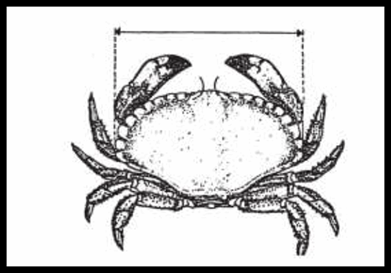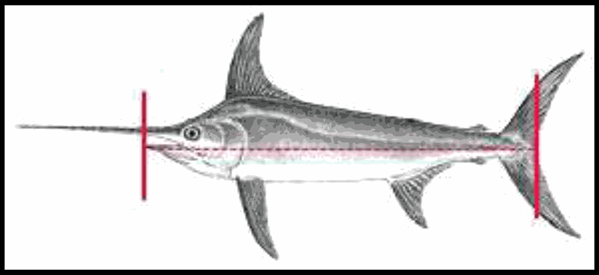ANNEX IVU.K. MEASUREMENT OF THE SIZE OF A MARINE ORGANISM
The size of any fish shall be measured, as shown in Figure 1, from the tip of the snout to the end of the tail fin.
The size of a Norway lobster (Nephrops norvegicus) shall be measured, as shown in Figure 2, either:
as the length of the carapace, parallel to the midline, from the back of either eye socket to the midpoint of the distal dorsal edge of the carapace, or
as the total length, from the tip of the rostrum to the rear end of the telson, not including the setae.
In the case of detached Norway lobster tails: from the front edge of the first tail segment present to the rear end of the telson, not including the setae. The tail shall be measured flat, unstretched and on the dorsal side.
The size of a lobster (Homarus gammarus) from the North Sea except Skagerrak or Kattegat shall be measured, as shown in Figure 3, as the length of the carapace, parallel to the midline, from the back of either eye socket to the distal edge of the carapace.
The size of a lobster (Homarus gammarus) from Skagerrak or Kattegat shall be measured, as shown in Figure 3, either:
as the length of the carapace, parallel to the midline, from the back of either eye socket to the midpoint of the distal dorsal edge of the carapace, or
as the total length, from the tip of the rostrum to the rear end of the telson, not including the setae.
The size of a crawfish (Palinurus spp.) shall be measured, as shown in Figure 4, as the length of the carapace, parallel to the midline, from the tip of the rostrum to the midpoint of the distal dorsal edge of the carapace.
The size of any bivalve mollusc shall be measured, as shown in Figure 5, across the longest part of the shell.
The size of a spinous spider crab (Maja squinado) shall be measured, as shown in Figure 6, as the length of the carapace, along the midline, from the edge of the carapace between the rostrums to the posterior edge of the carapace.
The size of an edible crab (Cancer pagurus) shall be measured, as shown in Figure 7, as the maximum width of the carapace measured perpendicular to the antero-posterior midline of the carapace.
The size of a whelk (Buccinum spp.) shall be measured, as shown in Figure 8, as the length of the shell.
The size of swordfish (Xiphias gladius) shall be measured, as shown in Figure 9, as the lower jaw to fork length (LJFL).









